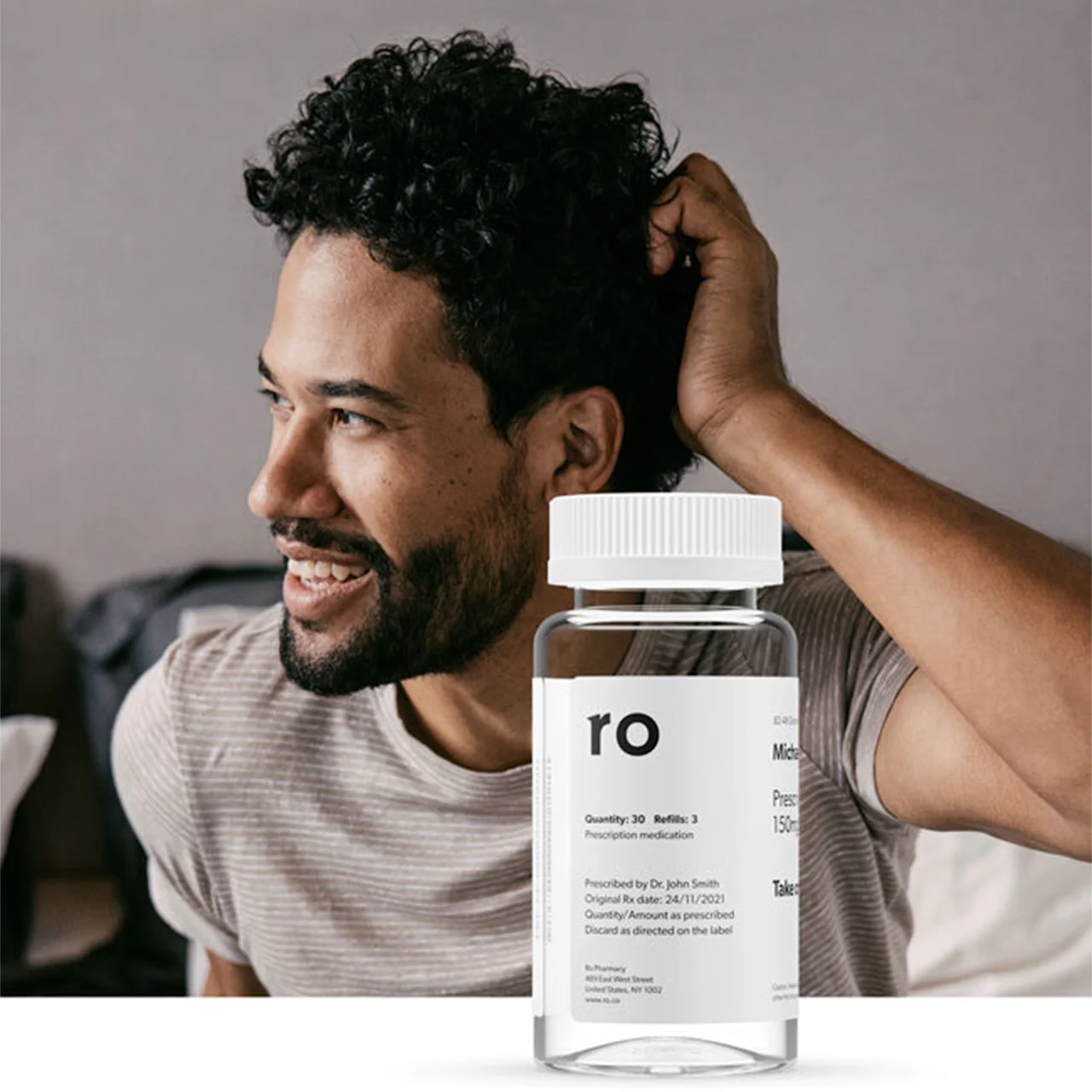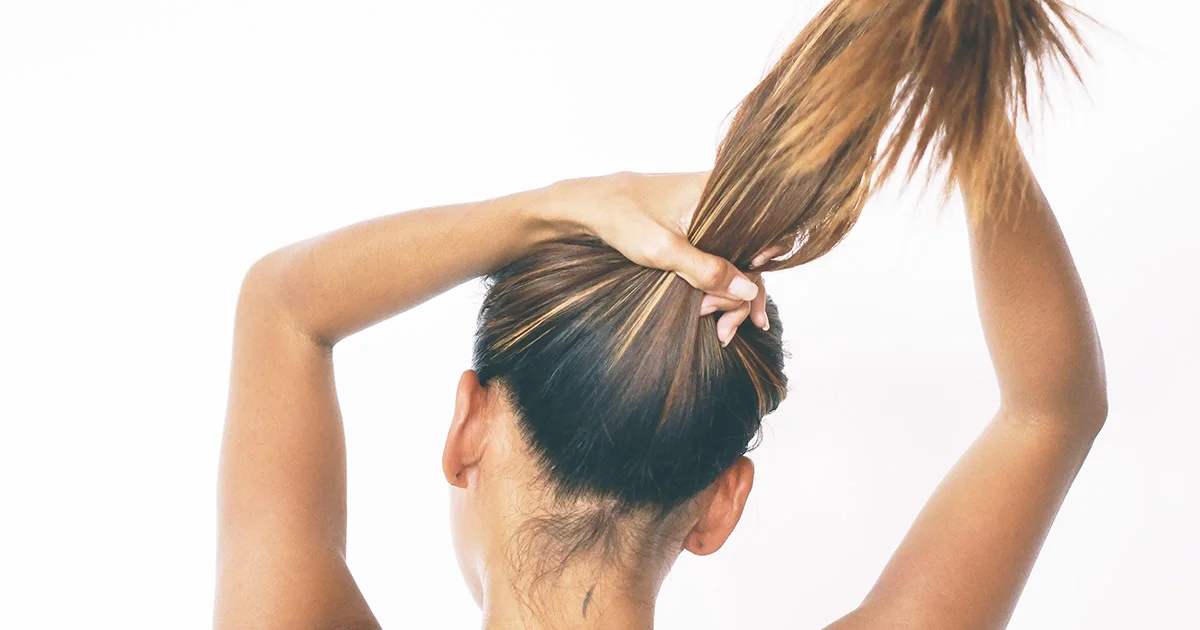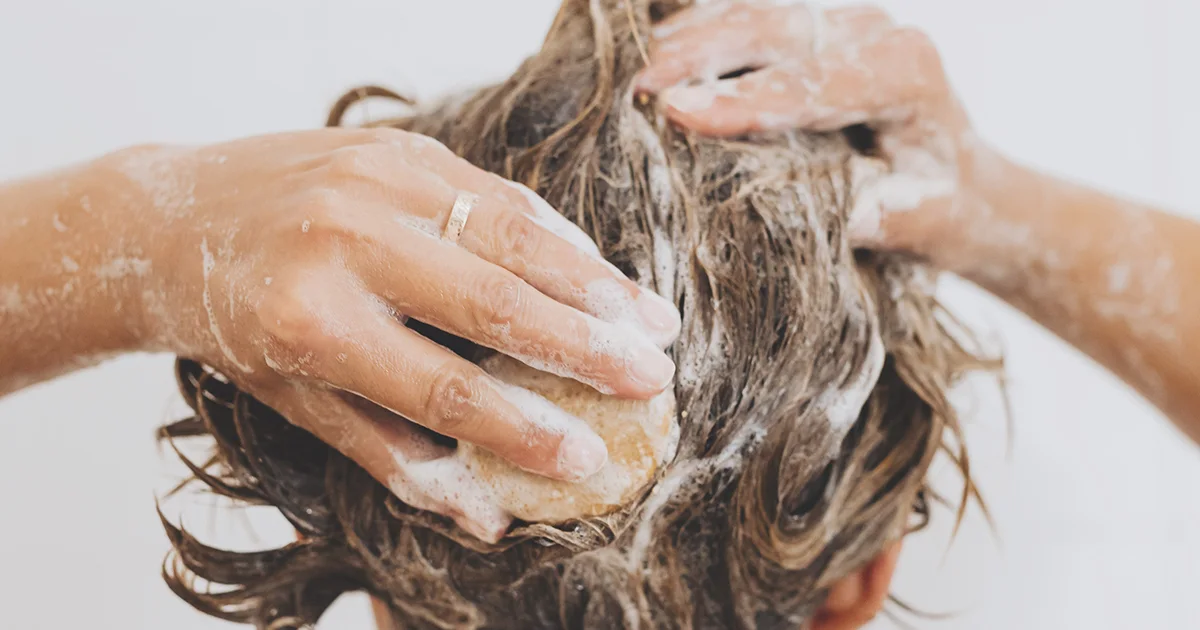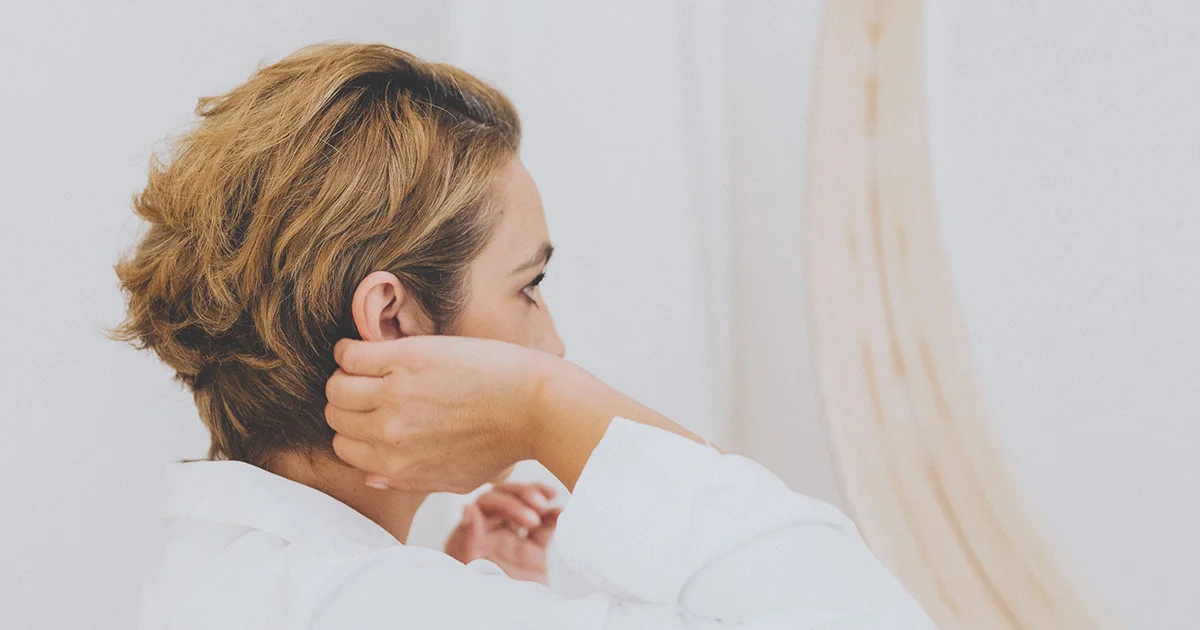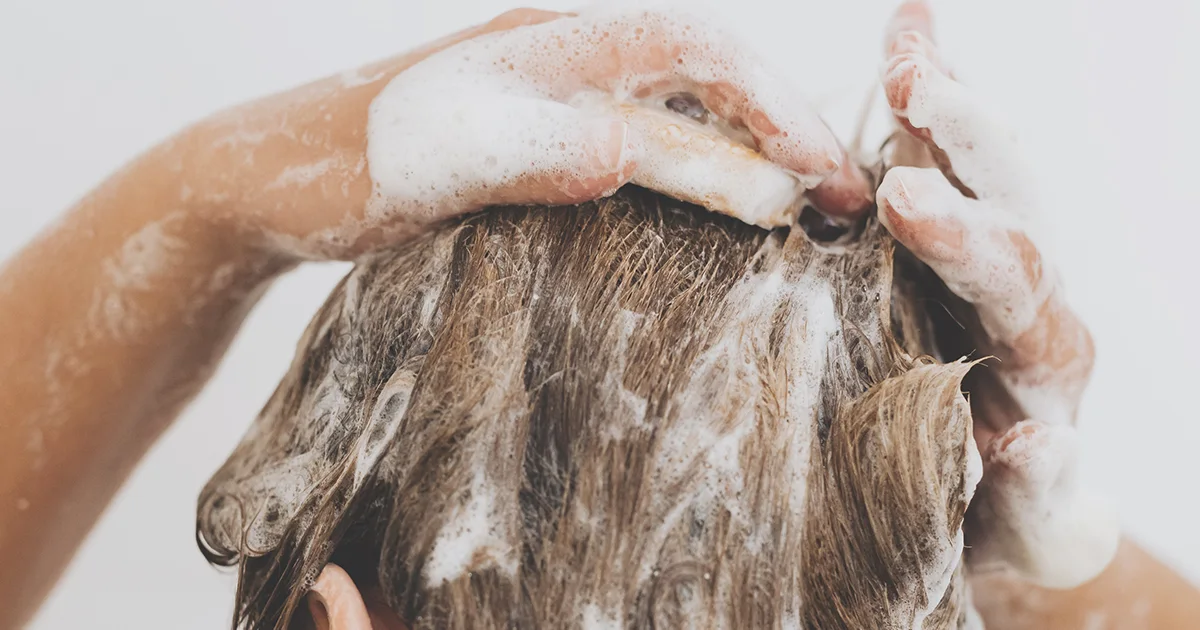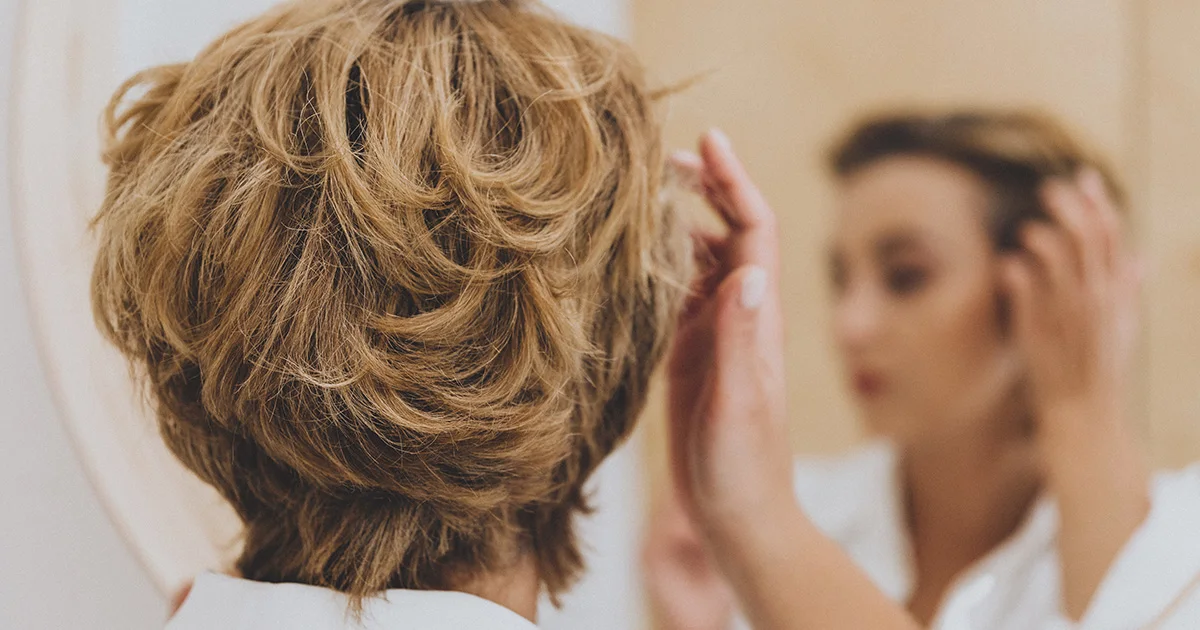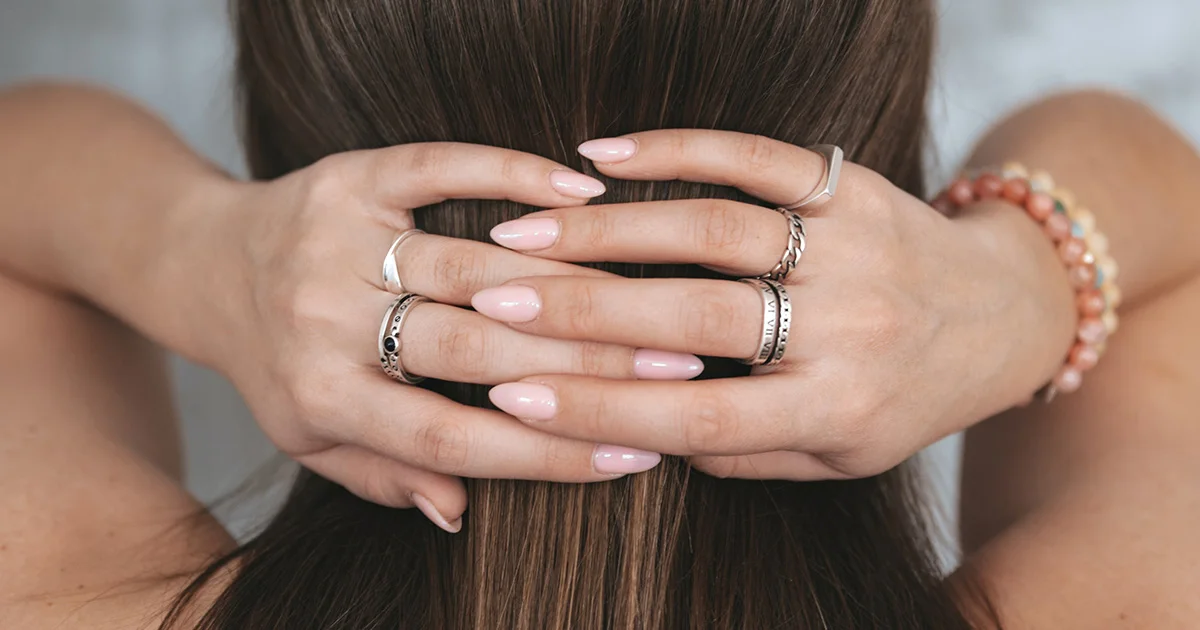Here's what we'll cover
Here's what we'll cover
You’re here because you want to know how to make your hair grow faster. Maybe your last haircut turned into more of a buzzcut than you’d like, or you’re hoping your hair can fill out before you have to be the best man in your friend’s wedding.
It’s important to know that there’s a limited extent to which you can make your hair grow faster, but most available techniques won’t hurt (even if they don’t work as well as you might hope). Let’s review how long it typically takes for men’s hair to grow and the different options for stimulating hair growth.
How fast does hair grow?
Some men’s hair seems to grow faster than others. In general, though, you can expect your hair to grow about one centimeter (or just under half an inch) per month (Institute for Quality and Efficiency in Health Care, 2019).
The human scalp has tens of thousands of hair follicles—usually around 100,000, though it varies from person to person (Almohanna, 2019). Every hair on your head goes through the same hair growth journey, which takes place over the course of two to eight years (Ryu, 2021).
How to make your hair grow faster
The best thing you can do to make your hair grow faster is to keep it healthy. Some hair growth methods are more effective than others, and your mileage can vary depending on your age, genetics, hormone levels, lifestyle, and overall health (Ryu, 2021). For example, adjusting your diet could have an impact if you have a nutritional deficiency, but it may not make a noticeable impact if you already eat well (Trüeb 2015).
8 hair growth tips
While there are limits to how much you can speed up hair growth, the eight tips below may help men make their hair grow faster.
1. Keep your scalp clean
Regularly shampoo and condition your hair every other day or so. (Avoid shampooing daily, so your hair’s natural oils get a chance to do their job). Cleaning your hair makes it easier for hair to grow. Why? Shampoo can protect against dandruff, which can contribute to hair loss if you scratch your head a lot, while conditioning can help replenish your hair’s natural oils after shampooing. Shampoo also softens your hair, so it’s easier to brush and comb with fewer tangles and less shedding (Trüeb, 2018; Gavazzoni Dias, 2015).
Pro tip: Around four in ten men have sensitive skin (Maurer, 2016). Opt for clean products without harsh chemicals that can cause damage or irritation to your scalp.
2. Eat a healthy, balanced diet
Nutrition is just as important for hair health as it is for your overall physical health. Being deficient in certain vitamins can contribute to hair loss (Almohanna, 2019). At the same time, having too much of certain vitamins (namely, vitamin A, vitamin E, or selenium) can actually contribute to hair loss (Guo, 2017).
Some vitamins and minerals often touted for being “hair-friendly” include (Almohanna, 2019; Guo, 2017):
Biotin
Vitamin C
Vitamin D
Vitamin E
Iron
Selenium
Zinc
Most people can get sufficient levels of these nutrients through a balanced diet. Unless you have a nutritional deficiency, it’s unlikely that changing your diet will significantly impact your hair growth (Trüeb, 2015).
Also, if you smoke and you’re concerned about hair growth, quitting is a good idea. Smoking is linked to hair loss (Trüeb, 2015).
3. Explore hair-healthy supplements
In addition to changing up your diet, you can use supplements that support hair health. Popular supplements for hair growth include:
Biotin is associated with improved hair, skin, and nail health. However, biotin is most effective when a person has hair loss due to a biotin deficiency, which is rare. Studies of the effects of biotin in healthy people are limited (Patel, 2017; Almohanna, 2019).
Collagen is a popular protein in the beauty and wellness industry. It’s also present in your hair, skin, and nails. More research is needed to determine if collagen supplements help your hair grow faster, but it’s not likely to hurt (Rustad, 2022).
Keratin is a protein that makes up 90% of your hair. As an essential building block for your hair, keratin may help boost hair growth. Indeed, some studies show shampoos containing keratin can help hair stay hydrated and look brighter and softer after styling (Villa, 2013).
Vitamin C supplements may be recommended for people with hair loss due to an iron deficiency. That’s because vitamin C helps your body absorb iron from your diet. Also, vitamin C is an antioxidant that fights off free radicals, which cause oxidative stress (a fancy term for damage). Oxidative stress can speed up the hair-thinning and graying that happen as you age (Almohanna, 2019).
Tocotrienol is another antioxidant that has been shown to fight oxidative stress and increase hair count (Beoy, 2010).
4. Stress less
Stress can exacerbate hair loss (Ryu, 2021). High levels of cortisol (the stress hormone) can impair hair follicle function and the hair growth cycle (Thom, 2016).
Explore stress reduction techniques. There’s exercise and yoga, therapy and meditation, and simply ensuring you have more opportunities for fun in your life, whether that’s relaxing with friends or working on your favorite hobby.
5. Get a scalp massage
Do we really have to justify this one? Scalp massages feel so good, but there’s also a chance they may boost hair thickness. In a small study, nine men used a scalp massaging device for four minutes a day for 24 weeks. At the end of the study, their hair was noticeably thicker (Koyama, 2016).
Researchers don’t know exactly how these effects were achieved, but scalp massage may boost blood flow to the scalp, thereby supporting hair health. Alternatively, scalp massage may positively affect the cells in the hair follicles (Ryu, 2021).
6. Take a look at product labels
Sometimes it’s not about enabling more hair growth but promoting less hair loss. If you can reduce the amount of damage to your hair, it may appear to grow faster simply because you’re not seeing as many split ends or lost strands in your hairbrush.
Take a look at the ingredients in your shampoo, conditioner, serums, creams, dyes, styling gels, and other hair products you use. Harsh chemicals, like alcohol, bleach, dyes, and sulfates, can damage the hair and impair its ability to grow longer (Ryu, 2021; Gavazzoni Dias, 2015).
Also, be aware of how you treat your hair. Excessive heat styling or intense hair treatments like bleaching or straightening can lead to damage or breakage (Gavazzoni Dias, 2015).
7. Try essential oils
Several essential oils, including avocado, argan, pumpkin seed, tea tree, lavender, olive, and jojoba, have shown promise in increasing hair growth in studies of people with alopecia (hair loss). However, more research is needed on their effects on people with healthy hair (Ezekwe, 2020).
Similarly, animal studies have found that rosemary oil and peppermint oil can promote hair growth, including hair thickness and follicle numbers, but there isn’t enough research to say if those same results can be replicated in humans (Oh, 2014; Murata, 2013).
8. Ask about medication
Two FDA-approved treatments have been proven to promote hair growth. These include topical minoxidil and oral finasteride.
Minoxidil, which you may recognize by its brand name Rogaine, is a topical medication. Minoxidil increases your hair’s growth phase, leading to longer and thicker hair (Badri, 2021).
Finasteride (Propecia) is an oral prescription medication intended for male pattern hair loss. It works by inhibiting DHT (dihydrotestosterone), a hormone that hastens hair loss (Zito, 2022).
Oral Minoxidil Important Safety Information: Read more about serious warnings and safety info.
Finasteride Important Safety Information: Read more about serious warnings and safety info.
Here’s to faster-growing hair
When your hair is healthy, it’s less prone to breakage. By adopting healthy hair habits—like regular shampooing and conditioning, cleaner hair products, and a healthy diet—you can create a more hospitable environment for hair growth to happen. However, if you are experiencing hair loss, the most effective way to promote hair growth is with proven medications like minoxidil and finasteride.
DISCLAIMER
If you have any medical questions or concerns, please talk to your healthcare provider. The articles on Health Guide are underpinned by peer-reviewed research and information drawn from medical societies and governmental agencies. However, they are not a substitute for professional medical advice, diagnosis, or treatment.
Almohanna, H. M., Ahmed, A. A., Tsatalis, J. P., & Tosti, A. (2019). The role of vitamins and minerals in hair loss: A Review. Dermatology and Therapy , 9 (1), 51–70. doi:10.1007/s13555-018-0278-6. Retrieved from https://pubmed.ncbi.nlm.nih.gov/30547302/
Badri, T., Nessel, T. A., & Kumar D. D. (2021). Minoxidil. StatPearls . Retrieved on Apr. 29, 2022 from https://pubmed.ncbi.nlm.nih.gov/29494000/
Beoy, L. A., Woei, W. J., & Hay, Y. K. (2010). Effects of tocotrienol supplementation on hair growth in human volunteers. Tropical Life Sciences Research , 21 (2), 91–99. https://pubmed.ncbi.nlm.nih.gov/24575202/
Ezekwe, N., King, M., & Hollinger, J. C. (2020). The use of natural ingredients in the treatment of alopecias with an emphasis on central centrifugal cicatricial alopecia: A systematic review. The Journal of Clinical and Aesthetic Dermatology , 13 (8), 23–27. Retrieved from https://pubmed.ncbi.nlm.nih.gov/33178378/
Gavazzoni Dias, M. F. (2015). Hair cosmetics: an overview. International Journal of Trichology , 7 (1), 2–15. doi:10.4103/0974-7753.153450. Retrieved from https://pubmed.ncbi.nlm.nih.gov/25878443/
Guo, E. L. & Katta, R. (2017). Diet and hair loss: effects of nutrient deficiency and supplement use. Dermatology Practical & Conceptual , 7 (1), 1–10. doi:10.5826/dpc.0701a01. Retrieved from https://pubmed.ncbi.nlm.nih.gov/28243487/
Institute for Quality and Efficiency in Health Care. (2019). What is the structure of hair and how does it grow? InformedHealth.org. Retrieved on Apr. 28, 2022 from https://www.ncbi.nlm.nih.gov/books/NBK546248/
Koyama, T., Kobayashi, K., Hama, T., et al. (2016). Standardized scalp massage results in increased hair thickness by inducing stretching forces to dermal papilla cells in the subcutaneous tissue. Eplasty , 16 , e8. Retrieved from https://pubmed.ncbi.nlm.nih.gov/26904154/
Maurer, M., Rietzler, M., Burghardt, R., & Siebenhaar, F. (2016). The male beard hair and facial skin - challenges for shaving. International Journal of Cosmetic Science , 38 Suppl 1 , 3–9. doi:10.1111/ics.12328. Retrieved from https://pubmed.ncbi.nlm.nih.gov/27212465/
Murata, K., Noguchi, K., Kondo, M., et al. (2013). Promotion of hair growth by Rosmarinus officinalis leaf extract. Phytotherapy Research , 27 (2), 212–217. doi:10.1002/ptr.4712. Retrieved from https://pubmed.ncbi.nlm.nih.gov/22517595/
Oh, J. Y., Park, M. A., & Kim, Y. C. (2014). Peppermint oil promotes hair growth without toxic signs. Toxicological Research , 30 (4), 297–304. doi:10.5487/TR.2014.30.4.297. Retrieved from https://pubmed.ncbi.nlm.nih.gov/25584150/
Patel, D. P., Swink, S. M., & Castelo-Soccio, L. (2017). A review of the use of biotin for hair loss. Skin Appendage Disorders , 3 (3), 166–169. doi:10.1159/000462981. Retrieved from https://pubmed.ncbi.nlm.nih.gov/28879195/
Rustad, A. M., Nickles, M. A., McKenney, J. E., et al. (2022). Myths and media in oral collagen supplementation for the skin, nails, and hair: A review. Journal of Cosmetic Dermatology , 21 (2), 438–443. doi:10.1111/jocd.14567. Retrieved from https://pubmed.ncbi.nlm.nih.gov/34694676/
Ryu, H. S., Jeong, J., Lee, C. M., et al. (2021). Activation of hair cell growth factors by linoleic acid in Malva verticillata Seed. Molecules (Basel, Switzerland) , 26 (8), 2117. doi:10.3390/molecules26082117. Retrieved from https://pubmed.ncbi.nlm.nih.gov/33917070/
Thom, E. (2016). Stress and the hair growth cycle: cortisol-induced hair growth disruption. Journal of Drugs in Dermatology , 15 (8), 1001–1004. Retrieved from https://pubmed.ncbi.nlm.nih.gov/27538002/
Trüeb, R. M. (2015). Effect of ultraviolet radiation, smoking and nutrition on hair. Current Problems in Dermatology , 47 , 107–120. doi: 10.1159/000369411. Retrieved from https://pubmed.ncbi.nlm.nih.gov/26370649/
Trüeb, R. M., Henry, J. P., Davis, M. G., & Schwartz, J. R. (2018). Scalp Condition Impacts Hair Growth and Retention via Oxidative Stress. International Journal of Trichology , 10 (6), 262–270. doi:10.4103/ijt.ijt_57_18. Retrieved from https://pubmed.ncbi.nlm.nih.gov/30783333/
Villa, A. L., Aragão, M. R., Dos Santos, E. P., et al. (2013). Feather keratin hydrolysates obtained from microbial keratinases: effect on hair fiber. BMC Biotechnology , 13 , 15. doi:10.1186/1472-6750-13-15. Retrieved from https://pubmed.ncbi.nlm.nih.gov/23414102/
Zito, P. M., Bistas, K. G., & Syed, K. (2022). Finasteride. StatPearls . Retrieved on Apr. 29, 2022 from https://pubmed.ncbi.nlm.nih.gov/30020701/
